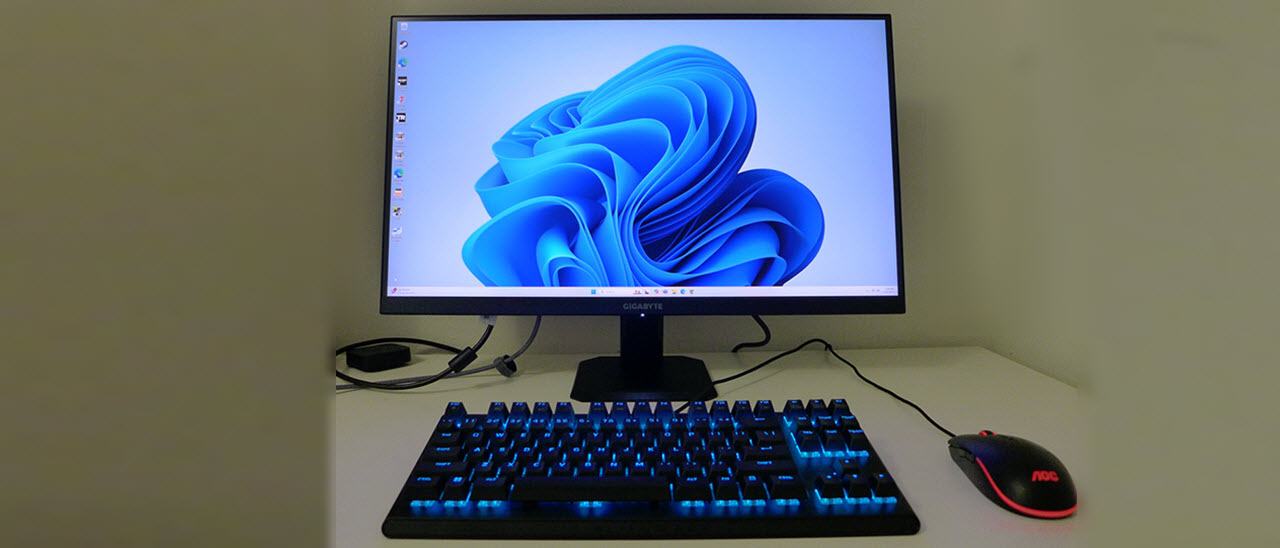Why you can trust Tom's Hardware
I had to cover a broad timeline to find enough displays for a fair comparison to the GS27U. Ultra HD typically comes in the 144 Hz flavor, but a few models run at 160 and 180 Hz. You can get 240 Hz too but I’ve only tested OLEDs at that speed. The other screens here are Asus’ XG27UCS, Alienware’s AW2725QF, BenQ’s EX321UX, HP’s Omen 27k and AOC’s PD32M.
Pixel Response and Input Lag
Click here to read up on our pixel response and input lag testing procedures.
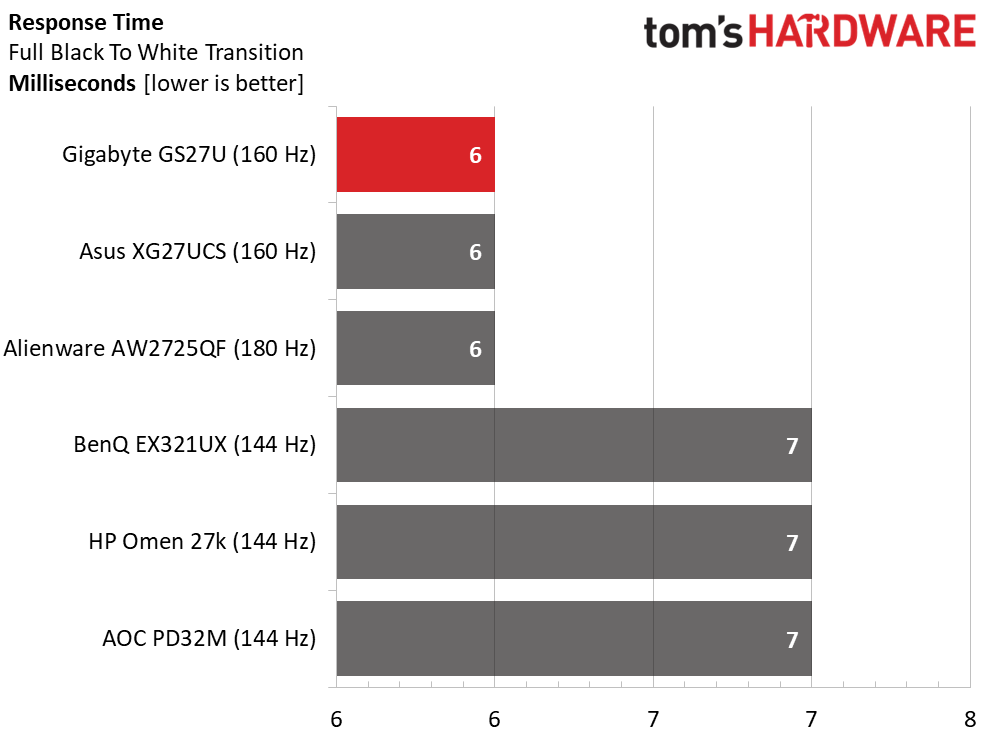
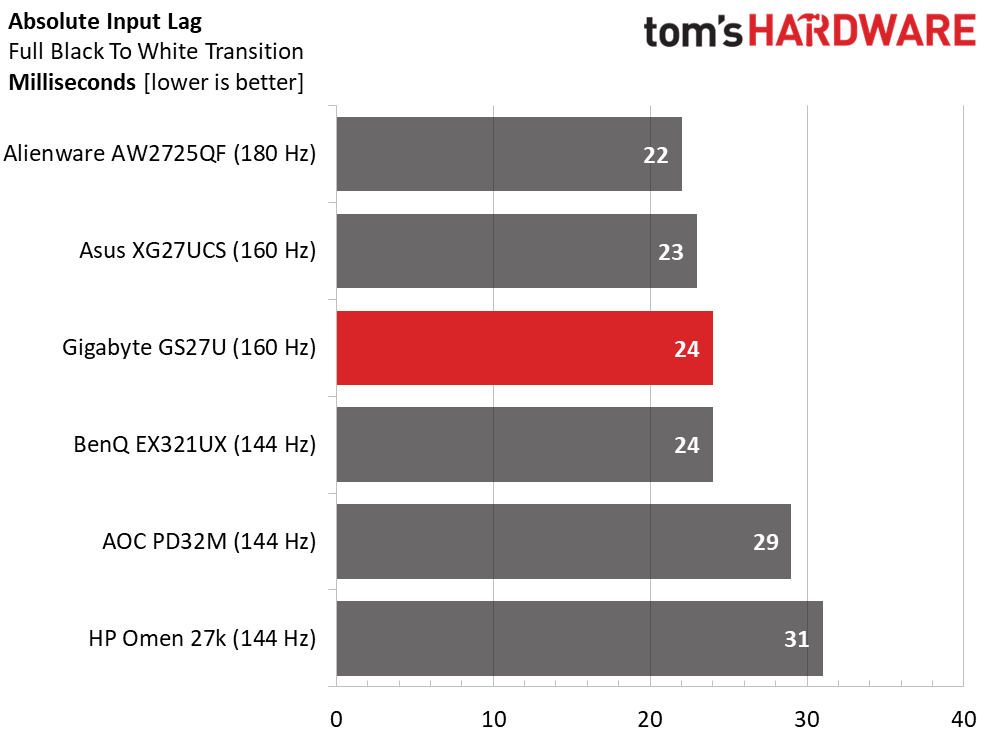
Response times are in step with refresh rates though I noted no advantage to the Alienware’s 180 Hz. It and 160 Hz monitors, including the GS27U, all draw a full white field in 6ms. This is fast enough for smooth motion which is made better when the overdrive is precise. Gigabyte has that one covered very well. I used the Picture Quality overdrive option to get these numbers.
In the lag test, the GS27U runs mid-pack with a respectable 24ms of total control lag. That’s only 2ms behind the 180 Hz Alienware so Gigabyte is making the most of its refresh rate with low processing overhead and that smooth overdrive. To get the best possible performance from this and any Ultra HD monitor, you’ll need a fast video card. Keeping the frame rate at 160 yields the best feel possible.
Test Takeaway: The GS27U is on par with its competition and delivers the same performance for less money. Only Asus and Alienware can manage lower input lag and their displays cost $80-200 more. The overdrive is one of the very best for sure. For $300, there is nothing else that can touch its superb play feel and smooth motion processing.
Viewing Angles
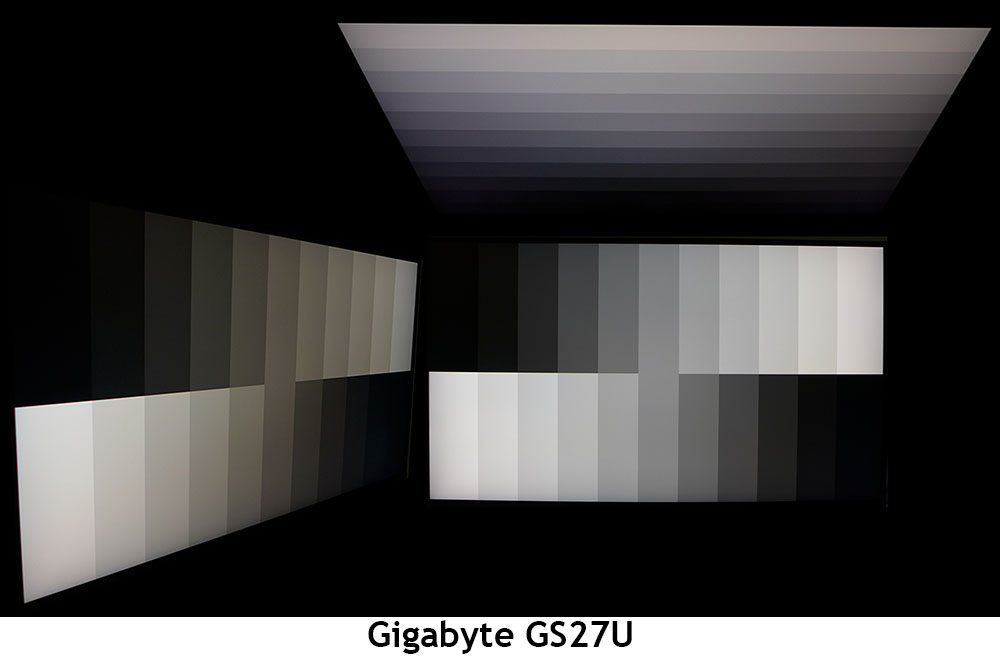
The GS27U has off-axis imaging typical of the IPS panels I’ve tested. A green tint can be seen at 45 degrees to the sides, but light output drops only slightly, and gamma remains constant. That means you won’t see any loss of detail as you move off center. The top view is washed out with a red and blue tone and reduced gamma. You can share the GS27U but it’s a bit small for two players.
Screen Uniformity
To learn how we measure screen uniformity, click here.
Get Tom's Hardware's best news and in-depth reviews, straight to your inbox.
My GS27U had no visible uniformity issues when looking at an all-black field pattern. The meter picked up a hotspot at the lower right, but I could not see it in testing or in content. There is none of the bleed or glow sometimes associated with IPS panels. This is excellent performance.
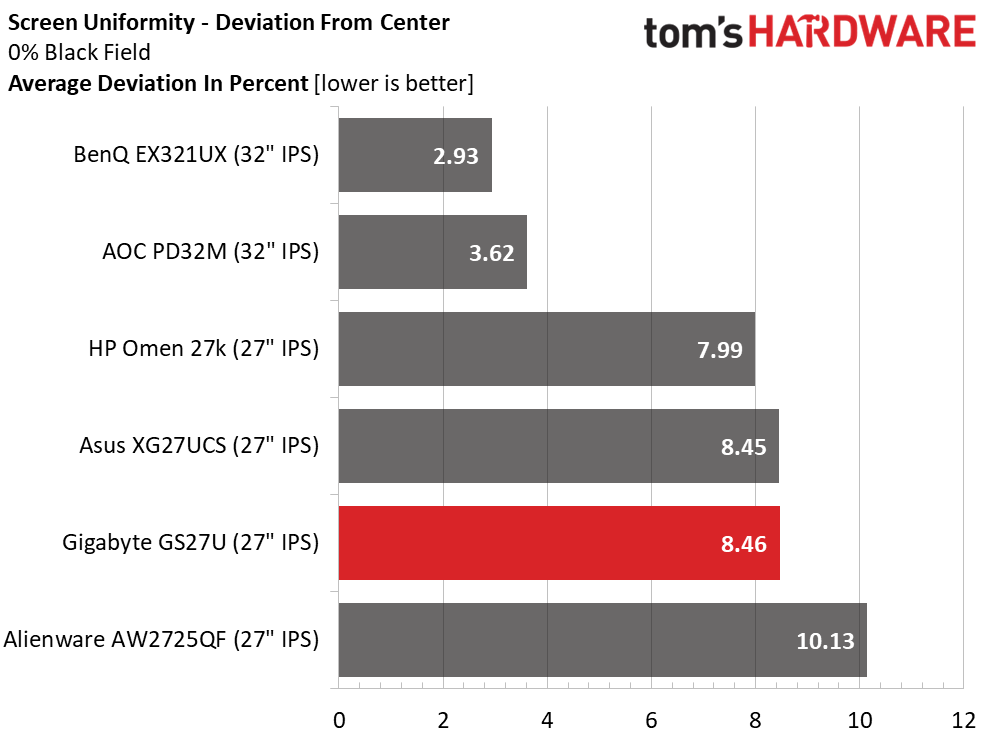
MORE: Best Gaming Monitors
MORE: How We Test PC Monitors
MORE: How to Buy a PC Monitor
Current page: Response, Input Lag, Viewing Angles and Uniformity
Prev Page Features and Specifications Next Page Brightness and Contrast
Christian Eberle is a Contributing Editor for Tom's Hardware US. He's a veteran reviewer of A/V equipment, specializing in monitors. Christian began his obsession with tech when he built his first PC in 1991, a 286 running DOS 3.0 at a blazing 12MHz. In 2006, he undertook training from the Imaging Science Foundation in video calibration and testing and thus started a passion for precise imaging that persists to this day. He is also a professional musician with a degree from the New England Conservatory as a classical bassoonist which he used to good effect as a performer with the West Point Army Band from 1987 to 2013. He enjoys watching movies and listening to high-end audio in his custom-built home theater and can be seen riding trails near his home on a race-ready ICE VTX recumbent trike. Christian enjoys the endless summer in Florida where he lives with his wife and Chihuahua and plays with orchestras around the state.
